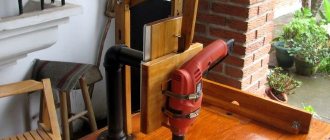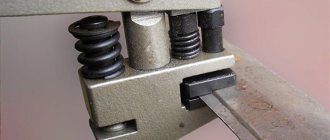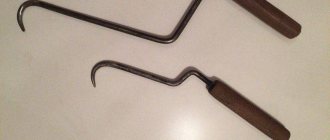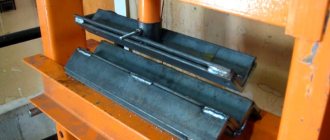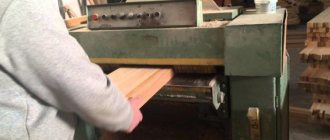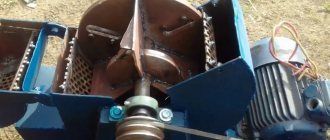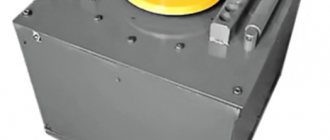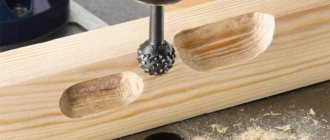You can bend a metal product in different ways, but without special tools the quality will be low. Using an edge bender you can solve many issues related to the preparation of parts from metal sheets.
Its features:
- possibility of bending to a specific length,
- no weld seams.
This makes it possible to prevent the formation of corrosion in the future and to produce elements of increased strength. The technique of working with the technical tool is simple. On its scale, it is enough to set the necessary bending parameters, insert a plane between the main and clamping parts and, moving, bend the edge.
This does not require significant effort or heating of the metal. Processing of products made of copper, aluminum, metal alloys and carbon steel is carried out by bending on machines or manually.
Types of sheet benders
For various works with metal sheets, different types of sheet bending machines are used:
- with a rotating beam;
- roller;
- roller;
- mechanical and hydraulic presses.
They differ in their technical capabilities and scope of application. All varieties can be made both in mobile or manual, and in stationary versions.
- Pipe benders with a rotating beam are the most common and convenient for DIY production. They can work with large sheets, bending both edges a few centimeters high and a wall of 30–70 cm at an angle of up to 120 0. It is also easy to bend to create a seam connection.
- A manual roller bender is used for bending edges and low walls during body repairs, roofing work, installing window sills and joining large sheets of tin. By choosing a roller profile, you can make a rather complex profiled bend, forming, for example, a fender or a fragment of a car bumper or a decorative element for finishing a fence or balcony railing.
- A roller pipe bender is used for bending semicircular gutters or full-section pipes. It can be adjusted in radius by moving the rolls: the support rolls horizontally, and the pressure rollers vertically. Such a homemade roller bender can be easily equipped with an electric drive with a chain or gear drive.
- Presses will be needed for bending both thin, up to 1 mm, and thick, up to 2–3 mm metal. They are capable of not only bending metal at an angle of up to 90 0, but also perforating it or gluing it under pressure. To change the type of operation, you only need to change the punch and die.
How they work is shown in the figure:
All types of machines are not complicated; it is only important to decide on the upcoming tasks and choose an installation model that will help solve maximum metalworking problems. For example, when making boxes or roofing work, a roller machine will be of little help, but when installing drainage systems, it will become indispensable, while a rotary machine can only partially help
Tinsmith's Tool
Such an edge bender is necessary during auto repair for a smooth transition of the metal patch to the base. After straightening, both planes must be coaxial with each other.
On a thin sheet of iron, it is impossible to guarantee the reliability of the butt weld joint. The device allows you to prepare an edge profile for overlap welding. It greatly simplifies the process of repairing a car body if you need to bend the metal at an angle of 90 degrees, i.e. make an edge or flange. Edge bending devices for auto repair are characterized by a simple design and low price, so making them yourself is not always impractical. Sometimes it is better to buy equipment for which there is an additional use in the household.
Video instructions on how to use a tinsmith's edge bender
Homemade hole punch
You can make a hole punch yourself, especially if you understand the principle of its operation and know how to connect the necessary parts together. Each craftsman comes up with his own design, but their basis is approximately the same:
- There must be a motor or several that puts the structure into action and runs from some kind of power source. Some people order motors separately, new and simple ones. Others take them from already unused household appliances, such as a sewing machine.
- You need needles to make holes. The main requirement for them is strength. And if you notice that even the needles of a hole punch purchased in a store quickly begin to bend, then you can safely replace them with self-tapping screws. The holes are made even better, it is easier to thread wire through them, and they will last much longer.
- For the base, you can take any boards or scraps from furniture, beehives and other wooden scraps that you have.
- Some attach a handle and fastenings for the planks to the structure, as on purchased models, while others do without them, simply holding the plank with their hands.
This is interesting Frameless beekeeping for beginners
The advantage of a homemade hole punch is that you can make the desired number of holes in the slats, place them at the distance you like, and the ability to experiment.
Let us describe a short instruction for one of the do-it-yourself hole punch options:
- You will need a motor, a movable table or furniture scraps for the base, diodes from old equipment, a limit switch, a toggle switch, furniture ball guides, screws, drills and screws for fastening.
- Make a base out of boards, attach screws to the motors and fasten them at the required distance from each other.
- Connect all the elements together according to the diagram.
You can make such a device in one evening and you have your own hole punch, which will save a lot of time.
Video: hole punch for frames - save time and labor costs.
How to make a manual edge bender for auto repair
To save money, you can make a homemade edge bender for body repair. It will greatly facilitate the production of, for example, patches on the threshold or fender of a car.
In this case, the repair site will not protrude above the surface, which will reduce the time and costs of puttying and painting.
A roller model for bending sheet metal can be made from:
- pairs of bearings,
- bolt for an axle with a diameter equal to the inner diameter of the bearings,
- thick metal plate,
- handles from a grinder.
The process of making a roller model for bending sheet metal
- Cut two pieces of the same length from the bolt and place the bearings on them.
- Drill holes in the plate for welding.
- Install bearings into the plate with a distance of 1 mm from each other.
- Weld a nut for the handle from a grinder to the center of the plate on the side opposite to the bearings.
Drawing up technical specifications
Thanks to the capabilities of the Internet, you can quickly find the required set of drawings, and on the YouTube channel you can even watch advertising and informational videos about the device and operating principle of the required unit. However, all these materials are strictly individual, and therefore were intended by their authors for specific sheet-bending operations. Therefore, before building a sheet bending machine with your own hands, you need to make the right choice of its future technical characteristics. The main ones should be the following:
- maximum width of bent metal, mm;
- maximum thickness of the workpiece, mm;
- desired range of bending angles;
- overall dimensions of the mechanism (length, width, height);
- required bending accuracy.
The direct choice of the limit values of the listed parameters depends on the conditions of use of the machine that will bend sheet metal products. In particular, when constructing a roof, you will most likely have to deal with galvanized sheet or steel with a thickness of no more than 1 mm. When processing copper, an even thinner sheet or strip is often used, and when making fences and railings with your own hands, on the contrary, the thickness of the metal can be 2 - 3 mm.
When choosing the optimal width of a workpiece - sheet or strip - you should proceed from the fact that the width of the part will rarely exceed 1000 mm (in extreme cases, adjacent workpieces can then be joined into a fold using the same machine).
Drawing of a homemade sheet bending machine
The most difficult point in the technical specifications is considered to be the choice of the optimal range of metal bending angles. If everything is clear with the upper limit - 180°, then the lower value should be chosen very wisely. A natural consequence of bending most sheet metals in a cold state is springback - a spontaneous decrease in the actual bending angle due to the elastic properties of the deformed metal. Springing depends on:
- Plasticity of the material: for example, for low-carbon steel the maximum spring angle is 5 - 7°, and for high-carbon steel - up to 10 - 12°. Alloy steels and alloys are even more springy. In particular, for aluminum alloy AMg6, the maximum springback can be 12 - 15°;
- Thickness of the bent part: with decreasing metal thickness, springing decreases;
- Bending angle: as this angle decreases, the springback of almost all metals increases. In particular, at relatively small bending angles (up to 15 - 20°), it is generally impossible to bend a workpiece made of most types of sheet metals and alloys to a given amount in the usual way: it is necessary to use units with simultaneous longitudinal stretching of the sheet. It is impossible to make such machines with your own hands: you will need to install and debug a special hydraulic drive. Therefore, in such cases, it is easier to bend the part with the usual blows of a mallet on, for example, a wooden matrix.
Areas of application
An edge bending machine or a simple hand tool designed for bending edges is widely used in many areas. The edge bender makes it possible, in particular, to produce air duct elements from thin sheet metal and to prepare the edges of workpieces for joining them by welding. Auto repair (body work) is another area of application for such tools and equipment.
Edge bending is also actively used in construction and when performing home repair work. Using such a tool, seam joints of thin-sheet metal elements are formed and even products of various configurations are manufactured.
Bending the end of a drainpipe on an electromechanical edge bending machineIf we talk about the principle by which the edge bender operates, it is quite simple. To bend the edge of a thin-sheet product, the edge bender scale is set to the required processing width, then the edge of the workpiece is placed between the working rollers of the device and, moving the device, the bend is performed.
Tool Properties
An edge bender is a hand-held tool used for bending edges. The product is mainly used for cold bending of sheet metal of small thickness (up to 1 mm). The properties of the edge bender are also used in the automotive industry - with the help of a simple tool it is possible to form small parts that require manual work, as well as to disguise overlapping seams.
The special configuration of the edge bender allows you to process complex building profiles and produce air duct elements from thin metal. The big advantage of the edge bending machine is the manual push control. Using an edge bender, you can regulate the pressure force exerted on the workpiece. Such a delicate approach is excluded in factory production, which produces elements for specified pressure units.
Edge bender - drawing diagram
The operation of a hand tool is a sequence of the following actions:
- fixation of the processed object;
- adjustment of the edge bender scale (processing width);
- installation of a metal sheet between the movable rollers of the product;
- formation of the final fold.
How the machine works
The main parts of a metal bending machine are:
- base;
- Desktop;
- clamp;
- crimping punch;
- handles - levers.
In more “advanced” models of do-it-yourself edge benders, you can also see a cutting roller knife. It’s also easy to do, but we’ll consider it additional equipment.
The base of the machine can be a welded metal table made from a corner or a profile pipe. When installing equipment permanently, you can also use a durable wooden table with massive legs. When bending sheet metal up to 0.8 mm thick (namely, these are the thicknesses that a homemade edge bender is designed for), no special effort is required, so forces of limited magnitude act on the base (frame). The strength of the base is required only for bending accuracy so that distortions do not occur.
The table dimensions are at least 1.5 m in length and up to 1 m in width. Even if you don't plan to work with large sheets of metal, it never hurts to have some extra. Sometimes non-standard situations arise for which every master should be prepared.
A work table is fixed to the front edge of the base - a section of channel No. 6.5 or No. 8. It must be positioned strictly horizontally and securely fastened to the base. If it is metal, then it is best to weld it. It can be attached to wood with bolts with a diameter of 10 mm.
A pressure bar is installed on the top of the work table, which also serves as a supporting surface. You can do it in several ways. It is best to use a corner 5X5 cm or larger, installed edge up. In this case, the front edge facing the crimping punch will be inclined at an angle of 135 0. This will allow you to easily bend the metal sheet at an angle of 90 degrees or more.
Holes for bolt fastenings are drilled on both sides of the clamp. You can weld studs to the base and press the rail with the wings, or you can install more complex clamps with return springs, which, after releasing the wings or rotating the handles, automatically raise the clamp. You can see how this system works in the video.
The front working punch is made of a square pipe or thick-walled angle with the same size as the clamping device. It should rotate around a horizontal axis coinciding with the top front edge of the punch. To do this, loops are welded at its ends
It is important to accurately level the clamp so that distortions do not occur during bending. The clamp should fit as tightly as possible to the edge of the desktop, with a minimum gap
The smaller the gap, the more accurate the fold line will be.
Types of edge benders
Clamping tools are available in various modifications, which differ in size, shape and design features. The most common model is the manual edge bender.
The principle of its operation is to move across the width of the sheet being processed, as a result of which the metal product is gradually bent along the designated seam. The maximum width of the processed workpiece is 0.8 mm.
The portable manual edge bender includes the following components:
- movable rubberized handles;
- lever system with which the pressing force is adjusted;
- working jaws proportional to the width of the edge;
- travel limiter, presented in the form of a carved screw.
The negative properties of the manual device include the low accuracy of the edge bending operations performed. When manually moving the tool, the part may move out of the desired position, which leads to the formation of an error. As a result of such a manufacturing flaw, the processed object may acquire an incorrect shape.
Roller devices are more limited in their action, since one pair of built-in rollers is not enough to carry out operations to form a thin flange of a small radius. In this case, it is possible to replace the rollers that adapt to the shape of the bend, but such labor-intensive intervention in the product is doubtful.
Hydraulic edge bending tools allow you to perform more technologically advanced and intensive operations. The high power potential of this device allows processing edges of significant thickness. Machines with electromechanical and pneumatic drives are also distinguished by high product processing performance.
Hydraulic edge bender
How the machine works
The main parts of a metal bending machine are:
- base;
- Desktop;
- clamp;
- crimping punch;
- handles - levers.
The base of the machine can be a welded metal table made from a corner or a profile pipe. When installing equipment permanently, you can also use a durable wooden table with massive legs. When bending sheet metal up to 0.8 mm thick (namely, these are the thicknesses that a homemade edge bender is designed for), no special effort is required, so forces of limited magnitude act on the base (frame). The strength of the base is required only for bending accuracy so that distortions do not occur.
The table dimensions are at least 1.5 m in length and up to 1 m in width. Even if you don't plan to work with large sheets of metal, it never hurts to have some extra. Sometimes non-standard situations arise for which every master should be prepared.
A work table is fixed to the front edge of the base - a section of channel No. 6.5 or No. 8. It must be positioned strictly horizontally and securely fastened to the base. If it is metal, then it is best to weld it. It can be attached to wood with bolts with a diameter of 10 mm.
Clamp
A pressure bar is installed on the top of the work table, which also serves as a supporting surface. You can do it in several ways.
It is best to use a corner 5X5 cm or larger, installed edge up. In this case, the front edge facing the crimping punch will be inclined at an angle of 135. This will allow you to easily bend the metal sheet at an angle of 90 degrees or more.
Holes for bolt fastenings are drilled on both sides of the clamp. You can weld studs to the base and press the rail with the wings, or you can install more complex clamps with return springs, which, after releasing the wings or rotating the handles, automatically raise the clamp. You can see how this system works in the video.
Punch
The front working punch is made of a square pipe or thick-walled angle with the same size as the clamping device. It should rotate around a horizontal axis coinciding with the top front edge of the punch. To do this, loops are welded at its ends
It is important to accurately level the clamp so that distortions do not occur during bending. The clamp should fit as tightly as possible to the edge of the desktop, with a minimum gap. The smaller the gap, the more accurate the fold line will be
The smaller the gap, the more accurate the fold line will be.
When not in use, the top edge of the punch is flush with the table surface. There shouldn't even be a millimeter difference. If there is a deviation in level, then a machine made by yourself will also work, but the bending radius will increase and instead of a straight line you will get a rounding.
Device of manual edge benders
Edge benders, although somewhat similar in appearance to sheet benders, have a fundamental difference - the height of the shelf usually does not exceed 5...20% of their length. A lower value corresponds to flanging the inner edge. When bending there is no such limitation, which predetermines noticeable design changes in the compared devices.
The first of them concerns the length of the flanging working area - for manual edge benders it can be small, since the height of the bead and the radius of curvature do not change. Accordingly, portable manual edge benders are produced, moving which along a pre-marked flanging line, we obtain the required profile.
If the edge formation zone is large, the process should be performed simultaneously. In such cases, an edge bender is more similar to a sheet bender, differing, in fact, only in the way the workpiece is pressed.
Let's consider the first version of the device. Portable manual edge bender for gradual bead shaping includes:
- Two handles, and one of them or both can be movable.
- Lever reinforcement system to create the required flanging force.
- Working jaws with a profile that matches the dimensions of the edge. Typically, the manufacturer equips a manual edge bender with a set of several jaws and the most commonly found in practice edge height and radius of curvature during the transition from the edge to the main plane.
- Adjustable travel stop: most often this is a removable slotted screw equipped with a thrust thread.
For ease of use, the handles are rubberized, which prevents the operator’s hand from slipping while applying force.
The second version of a portable manual edge bender is a roller bender, where the sliding friction of the jaws on the workpiece is replaced by rolling friction when the working rollers rotate. In this case, the shaping force is significantly reduced, but the tool turns out to be less universal, since there is only one pair of rollers, and it is not possible to change the edge formation parameters except by replacing a pair of rollers, which is quite labor-intensive. In addition, roller edge benders in most cases fail to perform internal flanging along small radii.
The main disadvantage of manual portable edge benders is their low accuracy: when moving the tool along the uneven line of the future edge, an error gradually accumulates, which at the end of the operation can reach a millimeter or more. This is unacceptable during auto body repair, so the quality of bead formation is determined only by the experience of the performer.
Main varieties
Edge bending equipment is available in the form of mobile and stationary models. The designs of the machines are massive and practically cannot be disassembled.
They are mounted directly at the place of use, and are moved only with the help of technical means.
Models can be:
- manual,
- pneumatic,
- hydraulic.
A special place in the product line belongs to segmented manual devices intended for the manufacture of cases, boxes, i.e. products “closed” on all sides.” Due to the different configurations, the segments can be installed arbitrarily. Such equipment allows you to obtain any bending length that does not exceed the working length of the machine.
Tool models differ from each other not only in power, efficiency and thickness of the materials processed, but also in the type of metal.
Portable models of edge benders with gradual shaping consist of:
- two rubberized handles, one can be movable, the other cannot,
- lever system for applying force,
- working jaws with a profile corresponding to the edge parameters
- adjustable travel stop in the form of a slotted screw equipped with a thread.
Roller-type hand-held products have the simplest design. The whole process is carried out by a handle, and the main task of deforming the metal is performed by rollers. The bending width is regulated by a special limiter installed on the tool guides.
In a roller edge bender, friction during sliding of the jaws replaces rolling friction during rotation of the rollers. In this case, the forming force is significantly reduced, but the design of the tool is less universal, because it is impossible to change the edge formation parameters due to one pair of rollers. In addition, edge benders with rollers do not make it possible to carry out beading of small radii inside the product.
A significant disadvantage of portable models of hand tools is their lack of accuracy. As the device moves along the line of the future edge, the error gradually increases, which can reach more than a millimeter. This is unacceptable for work such as auto body repair, so the quality of the edges depends on the experience of the specialist. Because of these technical characteristics, it is advisable to use a roller edge bender only for solving simple problems.
A machine with a hydraulic drive is more functional. Thanks to its high power, it copes well with workpieces made of metal sheets, even of considerable thickness.
How to choose
The WUKO tool line includes several models of various manual sheet benders, suitable for different requirements. The principle of their operation is the same: the roller mechanism bends the edge when the tool is pulled along the sheet manually. The company's engineers in the design of the sheet bender have originally implemented the process of flanging a metal sheet: roller guides simultaneously serve as a tool handle and a metric scale, allowing you to set the required distance for bending. The video demonstrates how the tool works.
Wuko Mini Bender. The simplest model of a manual sheet bender, the Wuko Mini Bender, has one pair of rollers. Model 2022 allows you to bend from 5 to 20 mm. There are options with the possibility of obtaining a higher side: 2030 and 2050.
WUKO DUO BENDER. For higher productivity, models with two pairs of rollers are available. They also differ in the amount of bend - from 200 mm (model 3200) to 350 (model 3350). There is also a version of WUKO DUO Bender 3350 PLUS, equipped with an additional removable handle and a support bar. Models with two rows of rollers are designed to work on straight sections.
- WUKO Uni Bender. To work on curved sections, especially when constructing dome structures, it is advisable to use special manual roller benders. They have an additional support roller, which simplifies the movement of the tool along the radius.
- DISC-O-BENDER. This tool is designed for forming a recumbent seam when making horizontal seams, joining valleys, and other works.
The range of manual roller bending tools is designed for professional roofers and tinsmiths performing various tasks in the installation of seam roofing and other sheet metal products. Manual sheet benders are used as additional convenient tools for sheet bending and seam-forming machines, but if necessary, you can use a manual roller sheet bender to produce a small volume of paintings when installing the roof yourself. If you decide to use a manual roller bender to create paintings for the roof, do not forget that the formation of each bend occurs in several steps: the tool beads the edge gradually, in several passes, so the production of the entire required volume of paintings, even for a relatively small roof of a country house, will take quite a long time time.
Self-production
The design of the hand bender is simple and elegant. On the Internet you can find drawings that allow you, if you have access to lathes and milling machines and the ability to use them, to reproduce the tool yourself. However, it must be taken into account that the factory-made tool has a special coating of the rollers - the most loaded part.
A variety of products made from tin and sheet metal, obtained by bending, are popular and in demand both in professional construction and mechanical engineering, as well as for minor household repairs and household needs. A fully functional do-it-yourself sheet bender for sheets up to 1.2 mm thick from ferrous, galvanized or non-ferrous metal can be made in a home workshop or a small metalworking shop.
Where to start making a sheet bending machine
To make a machine for bending sheet metal, you will need a drawing of such a device or its detailed photos. In addition, a number of important factors should be taken into account, such as the force that will need to be applied to use the sheet bending machine, its weight and dimensions (on which mobility depends), cost and availability of components. As a result, we obtain the following initial parameters.
- The maximum width of the sheet that will need to be bent is 1 m.
- Maximum thickness of sheet material: galvanized – 0.6 mm, aluminum – 0.7 mm, copper – 1 mm.
- The number of operating cycles that will be carried out without readjustment or repair is 1200.
- The maximum bend angle of a metal profile, obtained without manual finishing, is 120 degrees.
- It is highly undesirable to use workpieces made of special steels (for example, stainless steel).
- In the design of a sheet bending machine, welded joints that do not withstand alternating loads should be avoided.
- You should limit as much as possible the number of sheet bending machine parts that you will need to order externally, using turners or millers.
It is very difficult to find a drawing of a device that would satisfy all these requirements, but the most successful one can be modified.
Preparation of materials and tools
To make a sheet metal bending machine, you cannot do without the following tools and consumables:
- electric drill and a set of drills of various diameters;
- grinder, as well as cutting and grinding discs for it;
- welding machine and set of electrodes;
- workbench vice, set of clamps;
- a set of hand tools (hammer, sledgehammer, pliers, punch, chisel file).
To connect the tool, if there is no outlet located in the yard near the work site, you will need a reel-to-reel extension cord of the required length.
As consumables you need:
- corner profile made of thick-walled steel;
- bolts, nuts and washers (you can use screw washers);
- channel (U-shaped profile with partially sharpened edges);
- rule (if it is this that is used as the trigger element);
- reinforcing rod (reinforcement with a smooth surface is acceptable);
- a set of ball bearings (if the mechanism provides for their use).
Manual edge bender for do-it-yourself auto repair - Metals, equipment, instructions
Such a simple tool as an edge bender can be useful in many situations involving the need to process sheet metal products. There are many models of such a device on the modern market, but if you wish, you can make it yourself.
Edge benders can be used to form quite complex profile elements
Areas of application
An edge bending machine or a simple hand tool designed for bending edges is widely used in many areas.
The edge bender makes it possible, in particular, to produce air duct elements from thin sheet metal and to prepare the edges of workpieces for joining them by welding.
Auto repair (body work) is another area of application for such tools and equipment.
Bending the end of a drainpipe on an electromechanical edge bending machine
If we talk about the principle by which the edge bender operates, it is quite simple. To bend the edge of a thin-sheet product, the edge bender scale is set to the required processing width, then the edge of the workpiece is placed between the working rollers of the device and, moving the device, the bend is performed.
Main varieties
The simplest design of the edge bending devices on the market are manual roller type devices.
All manipulations with such edge benders are carried out using the handle with which they are equipped, and the main work of deforming the edge of the metal workpiece is performed by the rollers.
The width of the bend performed using such a device is regulated by means of a special limiter installed on the guides of the device.
Compact manual edge benders can be used directly on site
High mobility of the edge bender, which can be used even on high-rise objects, is ensured not only by its compact dimensions, but also by its low weight, about 2 kg.
Using a hand-held edge bending tool, you can bend the edge of a metal workpiece at an angle of up to 90°, while the thickness of the metal from which it is made cannot exceed 0.8 mm.
Using an edge bender, you can make bends of any length, and their width can be in the range of 0.5–20 cm. As can be seen from the technical characteristics of such a device, its capabilities are quite limited, so it is advisable to use it only for solving simple technological problems.
An edge bending machine equipped with a hydraulic drive is more productive and functional. The operator working on such equipment does not need to exert significant physical effort in order to bend the edge of a metal workpiece.
Due to the high power that this device is distinguished by, it can be used for processing sheet metal workpieces even of considerable thickness.
Edge bending machine ZSH-4.0 with hydraulic roller clamping
Depending on the dimensions, a hydraulic edge bending machine can be stationary or mobile. It is the hydraulic drive that is most often equipped with such equipment, which also has another name - “edge bending press”.
The edge bending machine can also be equipped with an electromechanical drive. Using this equipment, you can make folds of various types and even perform upsetting of the folded seam, if the equipment of the machine allows this to be done.
Making an edge or trimming it on a roller machine uses replaceable rollers, on which the shape of the bend depends
Edge benders equipped with a pneumatic drive are very popular. The working parts of such a machine, operating on the “rotary beam” principle, through the use of a pneumatic drive, make it possible to exert significant pressure on the workpiece being processed, the value of which can reach up to 6.2 bar.
When deciding to use serial equipment in this category or make a pneumatic machine with your own hands, you must keep in mind that for such a device to fully operate, it is necessary to provide an air flow of 113 l/min.
Option one. Long straight edge bending machine
In order to make such a device, you will need its drawings, which are easy to find on the Internet, as well as the following equipment and consumables:
- metal channels from which the base and clamps of the edge bender are made;
- thick-walled corner for making a crimping punch;
- metal sheet from which the edge bender brushes will be made;
- a metal bracket used as a handle for a device.
Pneumatic edge bender
Particularly popular among craftsmen are edge benders with pneumatic drive, which work as a “rotary beam”. The pneumatic drive contributes to significant pressure (up to 6.2 bar) on the workpiece. But such equipment can be used when working with sheet metal no thicker than 1.2 mm. In this case, the edge width will be no more than 12 mm.
If you want to make a pneumatic machine with your own hands, you must take into account that its operation requires an air flow of at least 113 l/min.
Pneumatic punch
This is a universal tool model. On one side, the structure is equipped with a mechanism for punching holes, on the other, with jaws for forming an edge.
Thanks to this, you can simultaneously bend the edge and make holes in the metal for fasteners. That is why the tool is often called a pneumatic punch. Its working part is made of high-speed steel. The rubberized handles of the product are equipped with springs. They help reduce pressure on the palm, which facilitates the process of punching and processing.
Any model of hole punch-edge bender works much faster and more efficiently than its manual counterparts, which is why it is intensively used at service stations and car repair shops.
Self-production of an edge bending machine
How to make a device for performing edge bending operations? This problem can be solved quite simply.
Option one. Long straight edge bending machine
In order to make such a device, you will need its drawings, which are easy to find on the Internet, as well as the following equipment and consumables:
- metal channels from which the base and clamps of the edge bender are made;
- thick-walled corner for making a crimping punch;
- metal sheet from which the edge bender brushes will be made;
- a metal bracket used as a handle for a device.
Scheme of operation of a homemade edge bender
The assembly diagram for making a machine for performing edge bending operations is as follows:
The edges of the punch and base are chamfered, the size of which should be 7x45°, and the length should be 30 cm. Metal rods with a diameter of 10 mm are welded to the punch, which will act as axes. When welding such rods, it is necessary to ensure that their axis coincides with the edge of the angle. Samples are made at the ends of the working part of the clamp. A homemade edge bender is pre-assembled in a vice, with the help of which the punch is compressed with the base
In this case, it is important to ensure that the wall of the punch and the working shelf of the base, between which the cardboard spacer is placed, are located in the same plane. Steel brushes are placed on the punch axis and pressed to the base using clamps. After checking the correct position of the brushes, they are welded to the base of the device. Holes are drilled at the base of the edge bender into which clamping bolts are screwed. Studs are welded to the base of the machine - a metal channel - onto which nuts are screwed. Having unscrewed the bolts, they are inserted into the drilled holes of the clamping mechanism and the restriction nuts are screwed onto them. A handle is welded to the metal corner of a homemade edge bender.
Drawing of a bending beam (click to enlarge)
Drawing of the lower beam (click to enlarge)
Drawing of the pressure beam (click to enlarge)
Once your edge bending device is assembled, all that remains is to secure it in a bench vise.
Edge bender mounted on a workbench
https://youtube.com/watch?v=EBreqnlypps
Option two. Manual edge bender for flanging
With this homemade device you can bend edges of any length, and the design is taken from manual factory-made edge benders.
Using these examples, we examined the procedure for manufacturing standard edge benders, which can be used to perform a whole list of technological operations. If you need an edge-bending device, which is used to carry out auto repairs, then it has an even simpler design and, accordingly, low cost, so it is not practical to make it yourself: it is better to purchase such a device.
Related materials:
Do-it-yourself manual edge bending - saving the family budget
Many people are interested in how to make an edge bender themselves, and how difficult it is. Making a simple design will take several evenings and save several thousand rubles. Another argument may be the urgency of use.
For example, for auto repair, using a hand-made edge bender will save time and nerves. But such equipment may be inferior to factory products in terms of accuracy and manufacturability.
Video - how to make an edge bender yourself
Temporary structure according to a simplified scheme
The considered version of the sheet bender is made for regular work, and is actually a stationary device. If you urgently need to do one-time work on making tin products, you can create a simpler device.
For production you will need:
- Three corners 40-50 mm, width according to your needs;
- A pair of door hinges;
- Two powerful clamps;
- Two rods (circles) as handles.
The two corners are fastened together with loops as tightly as possible.
The third, shorter corner, using clamps, presses the workpiece and the lower crossbeam to the workbench. This machine is not very convenient, but this is compensated by its ease of manufacture. The manufacturing option is up to you to choose.
DOMOSTROYPlumbing and construction
- Category: Construction
- Link to post
- https://firmmy.ru/
Butt welding is notoriously difficult to do on thin iron material. Thanks to the tool that is presented in this video of the “car resuscitator” channel, the work of car repair is greatly facilitated. Now you can mask a seam that is overlapped, resulting in a complete illusion of butt welding. Externally it looks very impressive and beautiful. First, look at how the master works with this tool of his, the design of the edge bender. In the second video you can see product drawings.
The master shows how, using a hand-made homemade edge bender, it is possible to make an even connection between two parts during auto repair. One of the parts has a uniform, flat surface. 2 parts have an edge with a recess. Millimeter deep groove. Two elements are applied to each other. A weld is made along the groove at the junction. Next it is sanded and leveled. We get an even, neat and flat connection of two elements; after coating with paint, it looks like one whole. The effect of butt welding, but in reality there is an overlap.
Let's look at the design of a manual edge bender in more detail. Small vice for stability. Support point. The length of the levers is 0.5 meters. 25 tube. Two pieces of tire are welded to it. Two holes. The result is a U-shaped part. Bolts 12. Let's try to disassemble the tool. When will it be possible to show all the components in more detail. The protrusion on this part is not formative. 2 parts have a counterpart. A lever is made to make work easier.
Two levers are connected to each other through a fulcrum. The pipe is 25, the tire is the same size. Shoulder length 100 millimeters. The distance between the bolts is 25 millimeters. The inner tube is 20 x 20. A millimeter plate is welded to it. The plate compensates for the difference in external and internal diameters. To simplify the design, a thread is cut into the cheek. The master did not use any drawings in the process of making this hand-held device; everything was done on a whim. The entire structure was drawn on paper.
If you want to replicate this design for your auto repair shop, then the following video will be valuable to you. Here you can see all the necessary drawings of this tool, which is called an edge bender. A very convenient device for working in the auto repair process.
A manual edge bender for auto repair, made by yourself, is easy to use and is popular among tinsmiths. There are a number of modern offerings of this device available at retail, although it is not difficult to manufacture.
